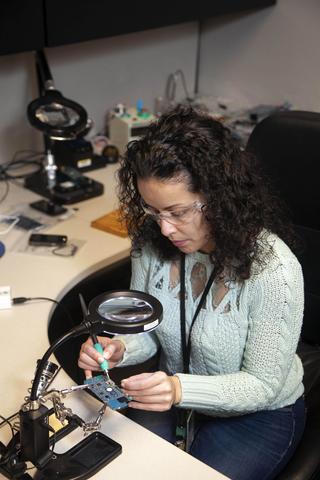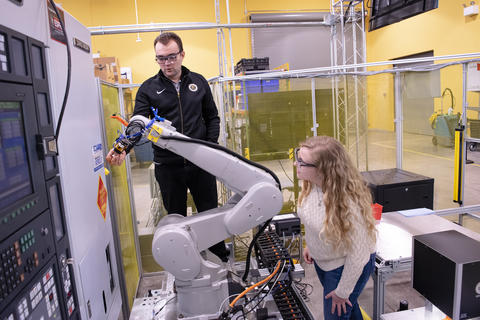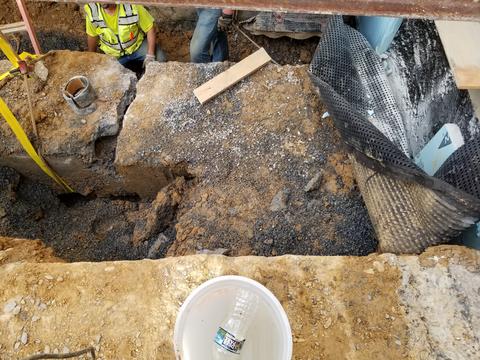FY2021: Presidential Budget Request Summary
The National Institute of Standards and Technology (NIST) promotes U.S. innovation and industrial competitiveness by advancing measurement science, standards, and technology. For more than 115 years, NIST has maintained the national standards of measurement, a role that the U.S. Constitution assigns to the federal government to ensure fairness in the marketplace.
This budget request is consistent with the administration’s priorities to redirect domestic discretionary resources to rebuild the military and make critical investments in the nation’s security and to keep the nation on a responsible fiscal path.
The President’s 2021 Budget Request will support U.S. leadership in Industries of the Future including quantum, AI, 5G and advanced communications. The requested funding will strengthen NIST’s efforts to advance the industries of the future, including efforts to accelerate the development and adoption of interoperable, secure, and reliable AI technologies and resilient position, navigation and timing systems, and support a prominent U.S. role in standards development efforts for 5G.
Budget Table ($, millions)
| FY 2019 Enacted | FY 2020 Enacted | FY 2021 Request | |
|---|---|---|---|
| Overall Budget | $986 | $1,034 | $738 |
Scroll down for a detailed breakdown of the budget. More information can also be found in this document.
Scientific and Technical Research and Services

The NIST research programs work at the frontiers of measurement science to ensure that the U.S. system of measurements is firmly grounded in sound scientific and technical principles. Today, the NIST laboratories address increasingly complex measurement challenges, ranging from the very small (nanoscale devices for advanced computing) to the very large (vehicles and buildings), and from the physical (resilient infrastructure) to the virtual (cybersecurity and data science). As new technologies develop and evolve, NIST’s measurement research and services remain central to national defense, homeland security, trade, and innovation.
NIST’s Scientific and Technical Research and Services (STRS) activities provide industry, academia, and other federal agencies with world-class research capabilities in measurement science that form the foundation of the global system of weights and measures and enable innovation. They supply basic and applied measurements, calibrations, and standards that impact every aspect of our economy and lives, from the accuracy of airplane altimeters to the reliability of clinical measurements and the strength of the encryption technologies that protect our digital lives and businesses. They lend unbiased technical support to the development of open, industry-led and consensus-based documentary standards and specifications driving the deployment of advanced technologies and facilitating global commerce. NIST offers unique, cutting-edge user facilities that annually help more than 3,000 scientists from academia and industry advance the state of the art in nanotechnology, bioscience, advanced materials, and other emerging technology areas.
Since its founding more than a century ago, NIST has sought to solve the most pressing measurement and technical challenges the nation has faced. From helping to standardize methods and materials for mass production techniques introduced during World War I to studying the collapse of the World Trade Center buildings on 9/11, NIST has sought to advance U.S. industry and security through measurement science and standards. NIST continues to provide measurement tools and standards that strengthen U.S. competitiveness and security in areas affecting Americans’ daily lives.
Strategic Focus Areas — Investing for the Long Term
Throughout its history, NIST has provided new industries with foundational measurement tools that enhance reproducibility, interoperability, and reliability to accelerate innovation, adoption, and impact. This budget request maintains a focus on developing capabilities in four areas where NIST’s ability to provide a strong technical foundation may determine the future of U.S. leadership:
- Quantum Science: NIST’s world-leading expertise in quantum science, conducted with academic and industry partners, is furthering the development of new quantum measurement technologies upon which U.S. companies can build new businesses and services.
- Artificial Intelligence: NIST is developing measurements and data that address the performance and reliability of AI systems to accelerate their widespread adoption and allow the nation to realize the potential economic, societal, and innovation benefits that AI systems offer.
- Engineering Biology: NIST is enabling the design and manufacture of biological systems — for products such as high-value pharmaceuticals and commodity chemicals — by developing advanced measurement capabilities from the molecular to the cellular system scale.
- Internet of Things: NIST is leveraging its expertise in advanced communications, manufacturing systems, cybersecurity, and more to develop testing tools, best practices, and standards that support the widespread deployment of safe and reliable internet of things (IoT) technologies and applications.
Budget Table ($, millions)
| FY 2019 Enacted | FY 2020 Enacted | FY 2021 Request | |
|---|---|---|---|
| Advanced Communications, Networks and Scientific Data Systems | $57.0 | $67.4 | $60.6 |
| Advanced Manufacturing and Material Measurements | $127.0 | $131.2 | $92.5 |
| Cybersecurity and Privacy | $77.5 | $77.5 | $79.4 |
| Fundamental Measurement, Quantum Science and Measurement Dissemination | $235.6 | $246.9 | $213.6 |
| Health and Biological Systems Measurement | $32.1 | $36.6 | $34.5 |
| Physical Infrastructure and Resilience | $64.1 | $63.1 | $43.7 |
| Exploratory Measurement Science | $75.4 | $75.4 | $75.5 |
| NIST User Facilities | $53.7 | $53.7 | $50.0 |
| Baldrige Performance Excellence | $2.2 | $2.2 | $2.2 |
| STRS Total | $724.5 | $754.0 | $652.0 |
NOTE: Totals may not add due to rounding.
Industrial Technology Services

NIST’s extramural programs, which include Manufacturing USA and the Hollings Manufacturing Extension Partnership (MEP), help U.S. industry develop and implement new technology, develop robust supply chains, and refine their systems for efficiency and effectiveness, all while making them more competitive in the global economy.
Manufacturing USA is a network of manufacturing innovation institutes where companies, universities, community colleges, and entrepreneurs develop new manufacturing technologies with broad applications. The primary goal of the network is to ensure that American innovations and inventions currently going offshore for production in competitor nations are scaled up from lab experiments to products and processes that can be used by U.S. manufacturers.
The MEP program is a federal-state-industry partnership that consists of centers located across the country working directly with their local manufacturing communities to strengthen the competitiveness of our nation’s domestic manufacturing base. NIST MEP provides technical assistance in adopting advanced manufacturing technologies, addressing emerging manufacturing needs, and understanding foreign manufacturing and compliance issues. The centers provide guidance on cybersecurity of supply chains and transferring technology from NIST labs and other federal research organizations.
Budget Table ($, millions)
| FY 2019 Enacted | FY 2020 Enacted | FY 2021 Request | |
|---|---|---|---|
| Manufacturing USA | $15.0 | $16.0 | $25.3 |
| Hollings Manufacturing Extension Partnership | $140.0 | $146.0 | $0.0 |
| ITS Total | $155.0 | $162.0 | $25.3 |
Construction of Research Facilities

The NIST Construction of Research Facilities (CRF) appropriation funds NIST construction activities, including the maintenance, repair, improvements, and major renovation of facilities occupied or used by NIST in Gaithersburg, Maryland; Boulder and Fort Collins, Colorado; and Kauai, Hawaii, to meet current and future measurement and research needs for the nation.
Scientific work at NIST laboratories supports the Industries of the Future and other national priorities such as health care, physical infrastructure, information technology, and many other areas. Facilities that can maintain environmental conditions such as temperature, relative humidity, and air quality are essential to the ability of NIST’s Laboratory Programs to make advances in wide-ranging areas including the Industries of the Future — quantum science, AI, 5G, advanced manufacturing, and the bioeconomy — as well as other core laboratory activities.
NIST measurement capabilities must be maintained at the highest levels of precision and accuracy to meet the increasing requirements of its stakeholders. Facilities that can maintain ideal environmental conditions would eliminate lost productivity and increase efficiency and effectiveness, providing researchers the opportunity to maximize their efforts on mission-related activities. In addition to being environmentally sound, all facilities must be compliant with various health and safety regulations. Other major conditions that must be addressed are the needs to increase the capacity of NIST facilities, to improve access for people with disabilities, and to safeguard the utility infrastructure of existing buildings.
NIST’s ability to maintain and renovate its infrastructure has been falling further and further behind. Numerous major utility infrastructure systems are currently in critical condition, creating risks of catastrophic failure of entire laboratory buildings. Major electrical and mechanical equipment at both campuses are beyond their useful life — they are no longer supported by the manufacturers, replacement parts are nonexistent, and the equipment is failing at an accelerated rate. The types of high-precision research and measurement the future requires will not be possible without wholesale facility upgrades.
Budget Table ($, millions)
| FY 2019 Enacted | FY 2020 Enacted | FY 2021 Request | |
|---|---|---|---|
| Construction of Research Facilities | $106.0 | $118.0 | $60.2 |

